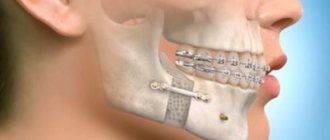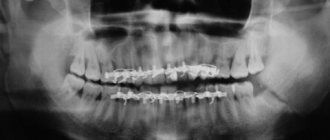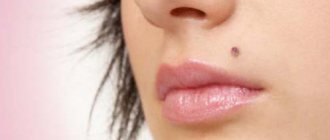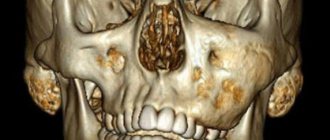Structure
The formation of the mandibular region is the result of the evolution of the human body. In the process of development, the entire structure became mobile and autonomous, gaining the ability to move freely and perform the basic functions necessary for a person. The temporal joint is localized in the fossa, connecting to the bony part.
When a subluxation occurs, the head of the joint partially comes out of the fossa, succumbing to the influence of external factors. As a rule, this phenomenon becomes a consequence of a general weakening of the ligaments or disturbances in the articular cavity. If you have the proper skills and practical experience, you can restore the original position of the jaw yourself, but the systematic occurrence of such a problem is the basis for complex treatment.
Reviews
Regardless of the reason why subluxation of the jaw develops, the situation should under no circumstances be left to chance. The main thing is to contact the clinic in a timely manner.
If you have encountered this anomaly from your own experience, you can leave your comment in the appropriate section, and perhaps this will be extremely useful to someone.
If you find an error, please select a piece of text and press Ctrl+Enter.
Tags: jaw subluxation
Did you like the article? stay tuned
Previous article
What is dangerous about viral stomatitis in children and the subtleties of its treatment
Next article
Technological features of All on 4 implantation
Causes and classification
Displacement of the lower jaw is the result of the application of an external force that exceeds in intensity the force of natural fixation. For each person, such a threshold is individual - some patients may suffer from minor force, while others are able to endure strong mechanical impact without consequences.
The main factors determining the tightness of the fit are ligament tension and bone attraction. The weakening of these connections can provoke the occurrence of subluxation, both one-time and in a chronic form. The reasons that negatively affect the condition of the jaw region include:
- Advanced stages of rheumatism;
- Developing arthritis or osteomyelitis;
- The occurrence of cramps and muscle spasms;
- Consequences of encephalitis;
- Epileptic seizures.
They also note the existence of traumatic factors, the occurrence of which can cause subluxation:
- Mechanical injuries - impacts, collisions;
- Excessive opening of the mouth;
- Having bad habits;
- Congenital abnormalities that affect the formation of the articular fossa.
The classification used in dentistry differentiates pathology according to the following criteria:
- Based on the position of the articular head - anterior, posterior and lateral subluxation;
- According to the specificity of the displacement - one-sided and two-sided form;
- Depending on the severity - for simple and complex cases.
The choice of technique, as well as the timing of treatment, depend on the original source of the problem. It is easiest to cure the pathology in the early stages, so at the first symptoms of subluxation it is recommended to consult a doctor and undergo an examination.
Therapy
Regardless of the form of the pathology, it requires realignment of the joint into the jaw fossa. Depending on the complexity of the clinical picture, several adjustment methods can be used to eliminate the problem.
Hippocratic method
Only an orthodontist can put the jaw back in place. Before carrying out the manipulation, he wraps the thumbs with a sterile cloth, sits the patient on a chair, and stands facing him. Everything is done under local anesthesia.
The wrapped fingers are placed on the molars, and the rest tightly grasp the entire jaw.
The doctor gently presses on the bone, relaxing the chewing muscle tissue. Then the jaw moves back, and then sharply upward. A click indicates that the joint is in place. The jaws will close spontaneously.
At the end of the procedure, the patient is given a sling-shaped bandage, and the load on the affected area is minimized for 14 days.
Basics of treatment of osteomyelitis of the upper jaw and expected prognosis.
In this publication we will talk about laser vestibuloplasty of the lower jaw.
Here https://www.vash-dentist.ru/lechenie/chelyust/opisanie-pereloma-nizhney.html we will talk about methods of treating a fracture of the lower jaw.
Popescu method
It is carried out when diagnosing an anterior dislocation in an advanced stage of its course. The method is justified when any other methods are ineffective. Based on the situation, either general or local anesthesia is prescribed.
All actions are carried out with the patient in a horizontal position. Between the lower molars and upper teeth, rollers made of soft fabric or bandage with a diameter of about 15 mm are attached.
The doctor applies pressure to the chin area upward and backward. This way the joint moves into the desired position.
Based on prostheses
It is carried out when there is a risk that the situation will become systemic. Special orthodontic devices – splints – are fixed on the teeth. They are classified into two types - removable and non-removable. The main purpose is to prevent the oral cavity from opening to its full potential.
In the vast majority of cases, this method of treatment is a successful relief from the pathology , with the exception of rare minor difficulties associated with the degree of mobility of the joint itself.
Symptoms and signs
For each form of subluxation, there are characteristic individual signs that indicate the presence of deviations. However, there are a number of universal symptoms observed in all types of pathology:
- The occurrence of pain of varying severity, aggravated when the patient attempts to move the lower jaw;
- Limited mobility of the temporomandibular joint, making it difficult to perform usual actions - eating or speaking;
- Active secretion of saliva associated with a swallowing problem.
In addition, with bilateral dislocations affecting the anterior zone, the following circumstances occur:
- Inability to close the jaws, forcing the patient to keep his mouth open;
- Pain in the skull and swelling of tissue in the ear area;
- Partial or complete dysfunction of the speech apparatus.
The unilateral form of subluxation has similar symptoms, but allows partial closure of the mouth, which significantly alleviates the patient’s problems. In turn, posterior bilateral subluxation is characterized by the opposite symptomatology - the inability to open the jaw, pressing of the lower part into the larynx area.
First aid and treatment
If a subluxation occurs, it is recommended to straighten the jaw using the infiltrative or guide method, after first calming the patient and giving him an anesthetic. The lack of such skills requires contacting a qualified orthodontist, who will not only restore the natural structure of the jaw apparatus, but also advise measures aimed at restoring and preventing recurrences. If the procedure aimed at realigning the joint is carried out in a timely manner, as well as medical recommendations are followed during the rehabilitation period, the prognosis for a complete cure is very favorable.
How to distinguish from a dislocation
Dislocation of the lower jaw is not just a partial displacement, but a complete exit of the head of the joint from the recess of the fossa. This is the fundamental difference between these two diagnoses, which can only be made accurately in a clinical setting.
To do this, the patient, after a visual examination by a specialized specialist, is prescribed an x-ray. Based on its results, the degree of displacement is determined and a final diagnosis is made.
It is worth noting that the symptoms of this pathology are almost identical. The only difference is in the intensity of manifestations of the main signs of the disease.
In the case of a dislocation, all the signs described earlier will be more pronounced. The pain syndrome is much more intense than in the case of jaw subluxation. Its treatment requires qualified medical assistance.
What to do if the hospital is far away
You can get injured not just a stone's throw from a medical facility, but several hundred kilometers away. That is why in such situations it is important to know how you can calm the patient while waiting for an ambulance or independently transporting him to the hospital.
The actions in this case are quite simple and do not carry a heavy semantic load:
- A patient who has dislocated his jaw must be reassured and prohibited from moving his mouth to talk or do other activities.
- Then the instructions involve fixing the chin with available materials (fabric, scarf, bandage, gauze, etc.). It is important that the jaw remains motionless during transport to a medical facility.
- If possible, you can administer any anesthetic injectable drug to relieve the victim's pain, but only if you are sure that there is no allergic reaction to it. If there is no anesthetic at hand, but there is a pharmacy, it is advisable to purchase it, because the pain can be very severe. They vary in price, so always check the price.
Upon arrival at the hospital, the patient will immediately receive medical assistance.
First aid
When a trip to the doctor is constantly postponed: consequences
Remember, a dislocation corrected in time does not have serious complications. Failure to receive medical care is fraught with the following consequences:
- persistent jaw dysfunction;
- formation of chronic dislocation;
- formation of scar tissue and atrophy of the muscle layer and ligaments of the jaw;
- failure to fully restore jaw movement.
Also, the consequences of a dislocated jaw depend on the severity of the injury. This could be a fracture, destruction of the walls of the ear canal due to posterior dislocation, or rupture of ligaments.
Independent actions
When a jaw is dislocated, a person should not make sudden movements. Severe pain is relieved with analgesics. In this case, the victim must know for sure that there is no allergy to the medication. Trauma is often accompanied by increased blood pressure. If the indicator increases significantly, you should take a drug that normalizes blood pressure.
Independent actions when realigning the jaw:
- Fixation of the jaw in one position using available means or a splint.
- Place a bandage in the mouth that will absorb the saliva that is produced.
- Call an ambulance. If the victim cannot speak, then he needs to ask neighbors or passersby for help (if the dislocation occurred on the street). If there is a clinic near the scene of the incident, you should go there immediately.
Before receiving qualified medical assistance, you should say as little as possible, since any movements can cause pain or complications of the dislocation. It is not advisable to adjust the joint yourself. Illiterate actions can lead to damage to the helping fingers or long-term dysfunction of the jaw apparatus in the victim.
Clinical manifestations
Symptoms depend on the type of dislocation. Common manifestations include:
- difficulty closing and opening the mouth;
- protrusion or distortion of the jaw forward;
- sharp pain radiating to the temple;
- profuse drooling;
- inability to pronounce words normally.
Treatment of habitual jaw dislocation should be carried out exclusively by a specialist. The only thing the patient can do is fix the position by bandaging his chin with a scarf. Painkillers and ice will help reduce pain.
On our website Dobrobut.com you can sign up for a consultation with the right specialist and undergo diagnostics if necessary.











